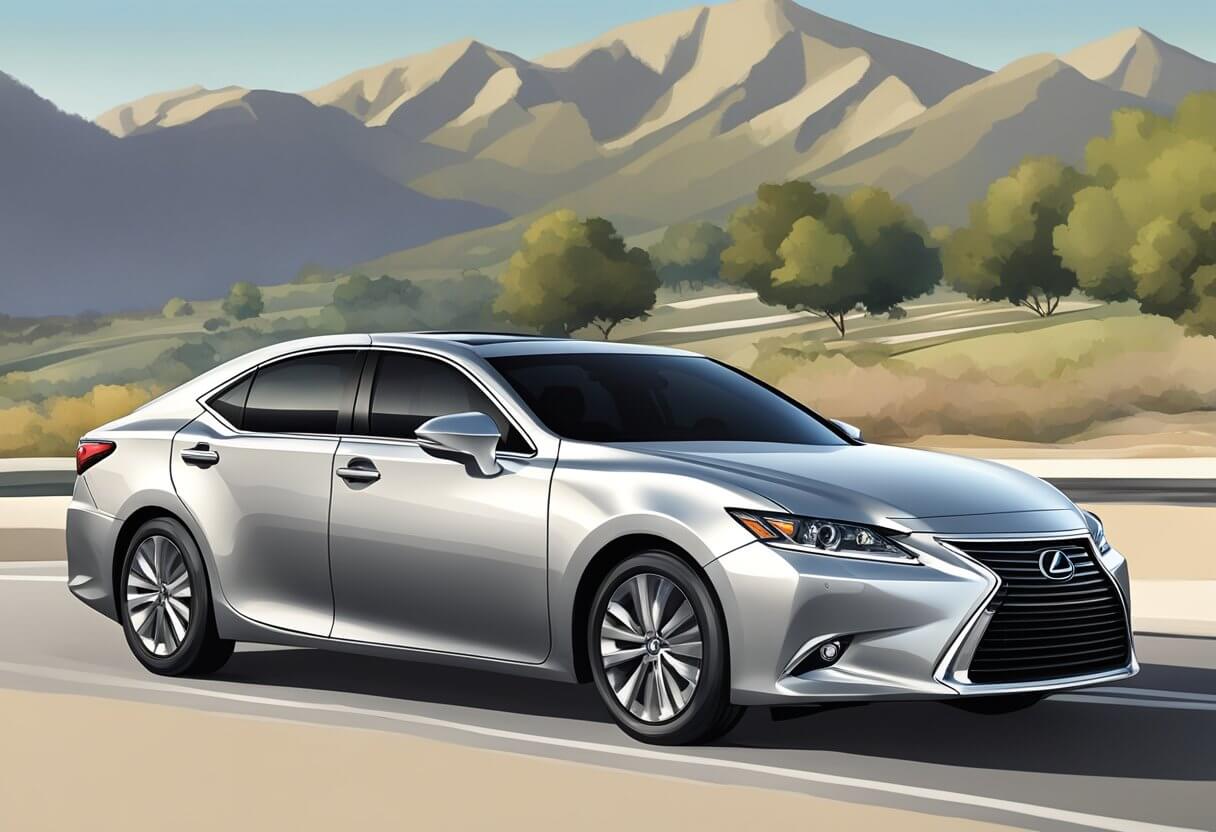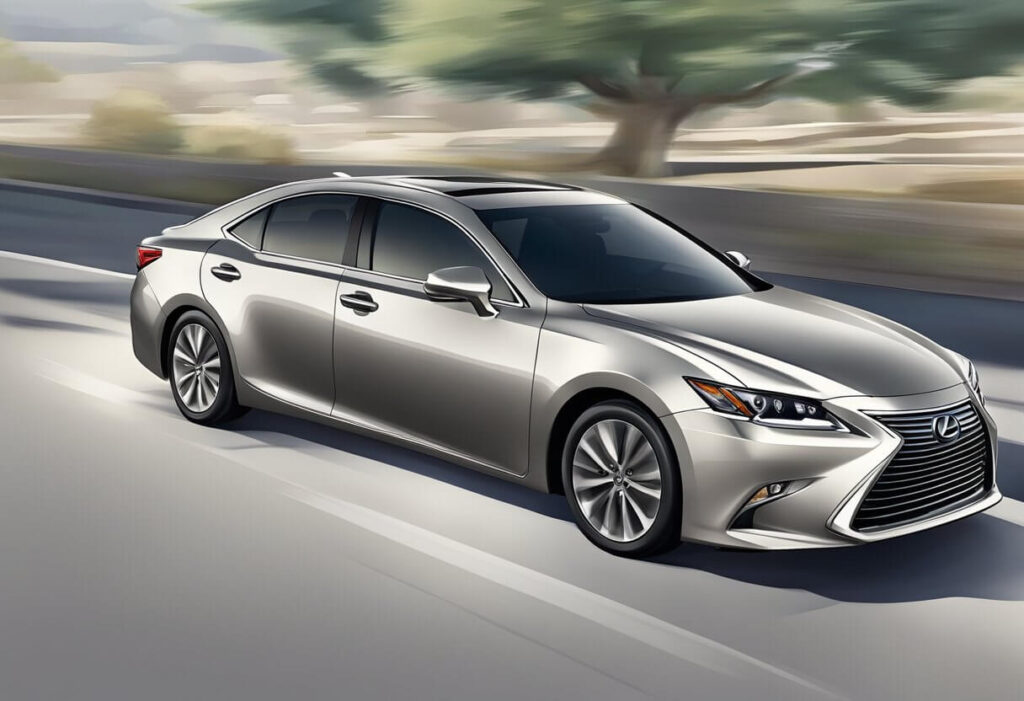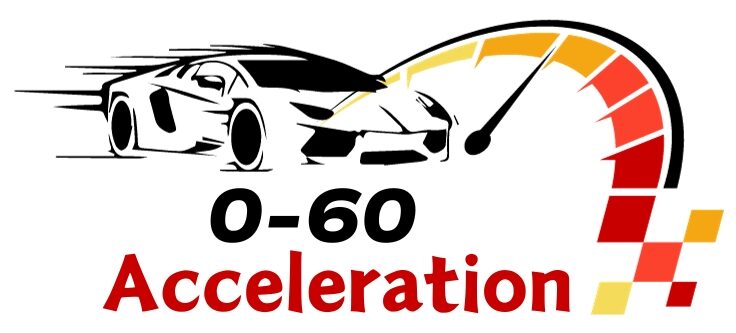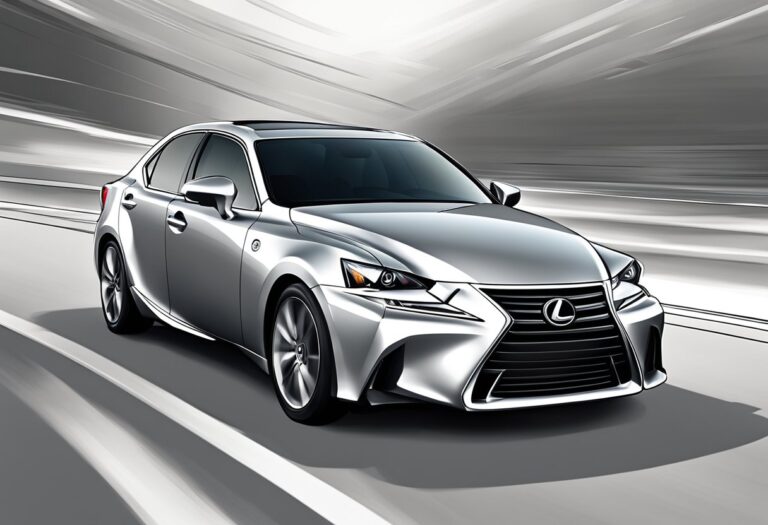
How quickly a car can go from 0 to 60 miles per hour (0-60 mph) is a key performance metric. It gives you an idea of the vehicle’s acceleration capabilities and the thrill you’ll experience when pushing the gas pedal. The 0-60 mph time is especially important for luxury car buyers who want a balance of comfort and exhilarating performance.
One such luxury vehicle that piques interest is the Lexus ES 350. This midsize sedan has been a popular choice for decades, praised for its elegant styling, plush interior, and reliability. But just how fast is the ES 350 0-60 mph time? This article dives deep into that question and everything related to the ES 350’s acceleration performance. We’ll cover the official 0-60 mph times, how it compares to rivals, the powertrain behind the numbers, real-world experiences, and more.
What is the 0-60 MPH Time for the Lexus ES 350?
According to Lexus, the current 2024 ES 350 can accelerate from 0 to 60 mph in just 6.6 seconds. This 0-60 time has remained consistent over the past few model years. Independent tests from reputable automotive publications have reported similar but slightly quicker acceleration times, like 6.1 seconds from Car and Driver.
Previous generations were a tad slower, with the 2016 ES 350 taking 7.1 seconds to hit 60 mph from a standstill. So the recent ES 350 models have seen a decent improvement in straight-line performance.
It’s worth noting that the manufacturer-claimed 0-60 mph times can vary slightly from real-world testing due to different factors like temperature, altitude, fuel quality, and more. But overall, you can expect the ES 350 to complete the 0-60 mph sprint in the 6.6 second range.
How the ES 350’s 0-60 Time Compares to Rivals?

In the midsize luxury sedan segment, a 0-60 mph time in the 6-second bracket is fairly typical. The ES 350’s 6.6 second time puts it squarely in the mix with most competitors.
For example, the 2022 Audi A6 with the 3.0T V6 engine has a 0-60 mph time of 4.8 seconds. The BMW 530i xDrive comes in at 5.8 seconds, while the Mercedes-Benz E350 4MATIC takes 6.1 seconds for the 0-60 mph run.
Luxury performance sedans take it further – the BMW M5 blazes from 0-60 mph in just 3.1 seconds! But those ultra-high performance models come with substantially higher price tags too.
Among more direct competitors, the Genesis G80 3.5T with its twin-turbo V6 edges out the ES 350 by completing 0-60 mph in 4.9 seconds. On the other end, the Acura TLX Type-S lags slightly behind at 4.6 seconds for the 0-60 mph sprint.
So while not the absolute quickest, the Lexus ES 350’s acceleration is highly respectable and puts it in the thick of the battle among fellow luxury midsize sedans.
The Engine Behind the ES 350’s Acceleration
What allows the ES 350 to put down those 6.6 second 0-60 mph times? The answer lies under the hood in the form of a 3.5-liter V6 engine that pumps out 302 horsepower and 267 lb-ft of torque.
This naturally aspirated gasoline engine is part of Toyota’s acclaimed 2GR family of V6 motors. It features advanced tech like dual Variable Valve Timing with intelligence (VVT-i) and direct/port fuel injection for optimum power delivery.
Backing up the 3.5L V6 is an 8-speed automatic transmission. This gearbox plays a crucial role in keeping the engine in its powerband for maximum acceleration from a standstill. The 8-speed auto’s closely-stacked gear ratios help extract every bit of performance from the V6 mill.
For the front-wheel drive ES 350 models, the powertrain puts down the power effectively without any noticeable torque steer or wheelspin when launching hard. Lexus has tuned the drivetrain well to manage the V6’s power delivery to the front wheels.
Impact of Drivetrain Configuration on 0-60 Times

Speaking of drivetrains, it’s worth noting that an all-wheel drive ES 350 could potentially be even quicker in the 0-60 mph sprint. However, Lexus does not currently offer an AWD configuration on the ES sedan.
AWD systems can aid acceleration times thanks to:
- Better traction at launch: With power going to all four wheels, the car can better put its power down without roasting the front tires. This allows for harder launches off the line.
- Less wheelspin: AWD drivetrains reduce issues like torque steer and wheel slippage that can plague high-power FWD cars during hard acceleration.
- More stable launches: The added weight of an AWD system over the driven wheels leads to better grip and straight-line stability when launching hard.
However, AWD hardware adds weight and drivetrain friction losses which can offset some of the acceleration gains. But even accounting for that, you could reasonably expect a 0.1-0.3 second improvement to the ES 350’s 0-60 mph time if it had an AWD variant.
Factors Affecting the ES 350’s 0-60 MPH Performance
While the powertrain is the heart responsible for the ES 350’s acceleration capabilities, several other factors play a role:
Curb Weight: The ES 350 tips the scales at a portly 3,690 lbs depending on trim level. This is fairly hefty for a midsize sedan and means the V6 engine has more mass to overcome from a standstill.
Aerodynamics: The ES 350’s slippery 0.29 coefficient of drag helps reduce aerodynamic drag at higher speeds. But aerodynamics play a smaller role in the 0-60 mph benchmark which is contested at lower speeds.
Gear Ratios: The intelligently spaced ratios in that 8-speed transmission allow the V6 engine to remain in its peak power band during initial acceleration bursts. Short gear ratios off the line are key for hard launches.
Tires: The ES 350 comes fitted with low rolling resistance tires optimized for ride comfort over outright grip. Stickier performance rubber could shave a few precious tenths off the 0-60 mph times.
Real-World 0-60 MPH Times and Perception
On paper, the ES 350’s 0-60 mph times in the 6.1-6.6 second range put it in the thick of the midsize luxury sedan mix. But how does that translate to real-world driving experiences? The subjective feeling of acceleration can differ from the objective numbers.
Most reviews indicate the ES 350 feels adequately quick off the line when you mash the gas pedal. The V6 provides a smooth, linear delivery of power that builds strong momentum without any dramatic sensations.
However, there are also remarks about the transmission being a bit hesitant or slow to downshift at times when you need a sudden burst of acceleration for passing maneuvers on the highway. So while capable in a straight line, the ES 350 may not feel as instantaneously responsive as you might expect from the spec sheet.
This could be due to Lexus prioritizing refinement and fuel efficiency in their transmission tuning over absolute performance. It’s a trade-off many luxury car buyers may find reasonable given the ES 350’s positioning as a plush touring sedan rather than an outright sport model.
The ES 350 F Sport – Any Improvements in 0-60 Pace?
For those wanting a sportier flavor of the ES 350, Lexus offers the F Sport trim. This variant adds performance enhancements like:
- Firmer, sportier suspension tuning
- Larger alloy wheels with stickier tires
- Enhanced steering feel and responsiveness
- More aggressive exterior styling
However, the F Sport does not come with any actual engine performance upgrades over the standard ES 350. So in purely straight-line acceleration tests, the differences are minor.
Independent tests have shown the ES 350 F Sport accelerating from 0-60 mph in around 6.5 seconds – just a 0.2 second improvement over the standard model’s 6.7 second time. The F Sport’s minor advantage likely comes from its upgraded tires providing slightly better traction off the line.
Where the F Sport truly aims to differentiate itself is through improved handling and steering feel for a more engaging driving experience out on twisty roads. But if raw acceleration is your top priority, you’ll get about the same 0-60 performance whether you opt for the F Sport or not.
How to Get Quicker 0-60 Times in the ES 350
While already highly respectable, there may be situations where ES 350 owners want to extract even quicker straight-line acceleration from their luxury sedan. Here are some potential methods:
Driver Technique: Skilled drivers can shave vital tenths off the car’s 0-60 mph time through proper launch techniques. This involves slipping the transmission into its sportiest mode, revving the engine to its ideal launch RPM, managing wheelspin through throttle modulation, and aggressively working the shifts.
Performance Air Filters and Exhaust: Installing a freer-flowing intake and less restrictive exhaust can liberate a few extra ponies from the V6 engine. The gains are typically modest – around 5-10 horsepower. But every bit helps for quicker launches.
Performance Programming: Aftermarket engine tuners can modify the ES 350’s engine ECU parameters like spark and fuel mapping to unleash more power. 10-20% boosts are feasible if you sacrifice some reliability.
Turbo/Supercharging: For extreme acceleration gains, forced induction via turbochargers or superchargers is an option. But these complex and pricey mods may not be worthwhile on the aging ES 350 platform.
At the end of the day, those minor mods can shave perhaps a couple tenths off the 0-60 mph time. But you’ll void warranties and potentially impact long-term reliability. For most owners, the stock ES 350’s performance will likely be more than adequate.
Final Opinion
The Lexus ES 350 has maintained a respectable 0-60 mph acceleration time of around 6.6 seconds for the current generation. This puts its straight-line pace right in the heart of the midsize luxury sedan battlefield. Credit goes to the potent yet refined 3.5L V6 engine and 8-speed automatic combo.
When stacked up against key rivals, the ES 350’s 0-60 times are highly competitive, although some models like the Genesis G80 can outpace it by a few tenths. And the F Sport trim provides only minor acceleration gains over the standard ES 350.
Ultimately, while not a scorching performance machine, the ES 350 delivers more than adequate acceleration for most luxury car buyers. Its blend of a quick 6-second 0-60 sprint with silky-smooth power delivery and a supple, comfortable ride make it an enticing daily driving package.
For those who want to push the ES 350’s speed envelope further, techniques like performance tuning and forced induction remain paths less explored. But out of the box, the Lexus ES 350 serves up highly respectable acceleration complementing its premium persona.






